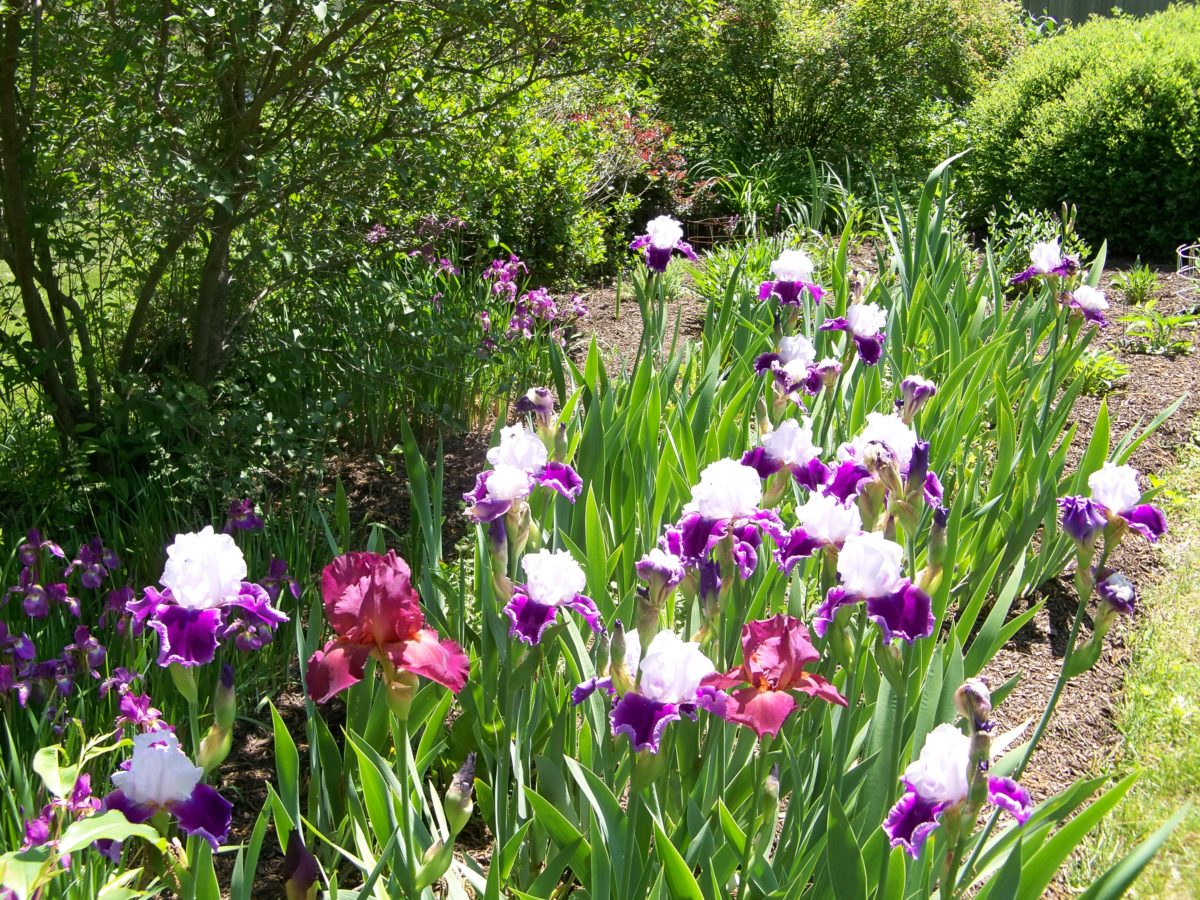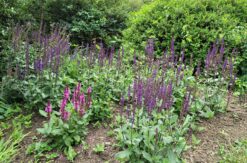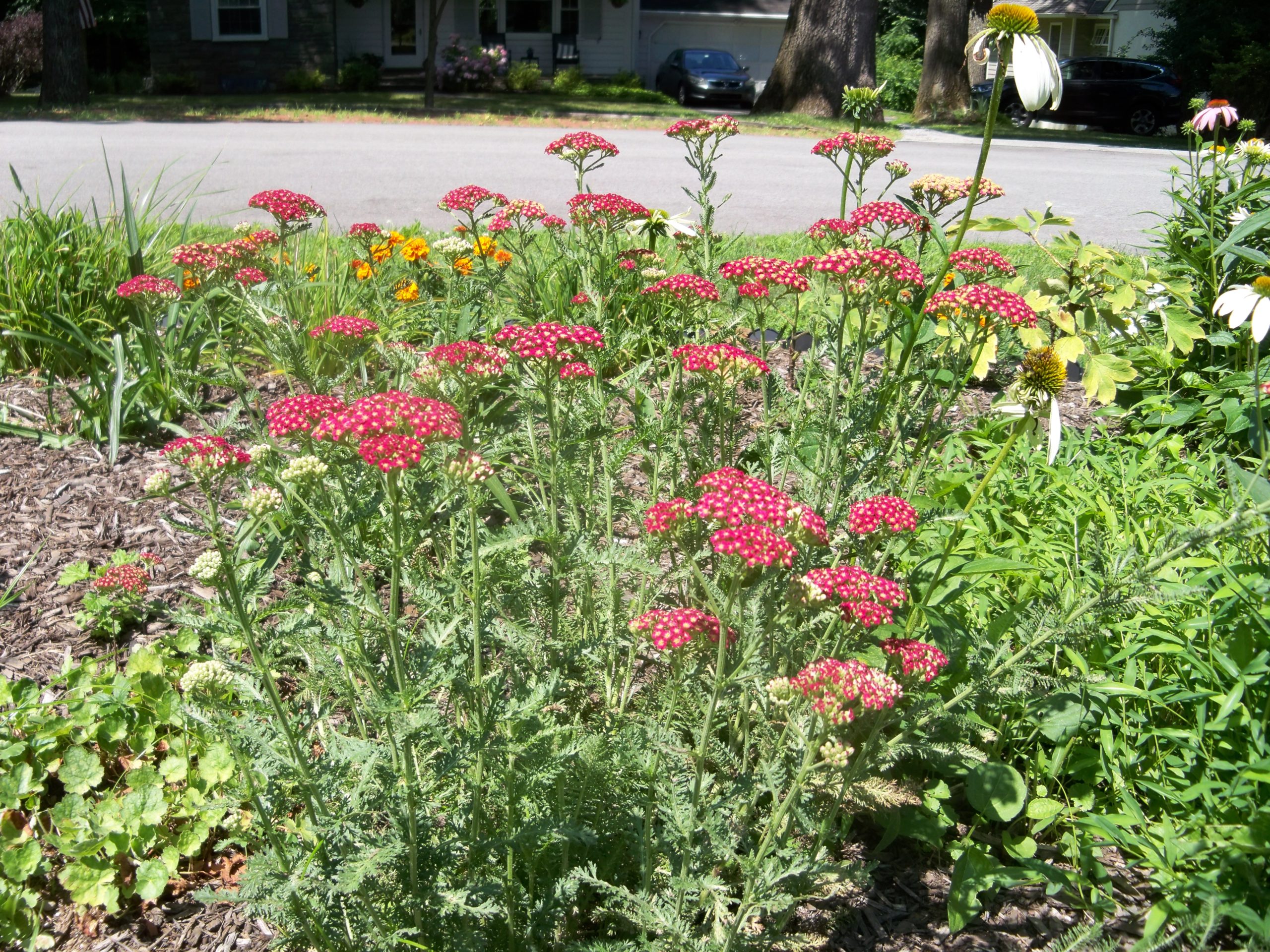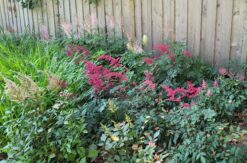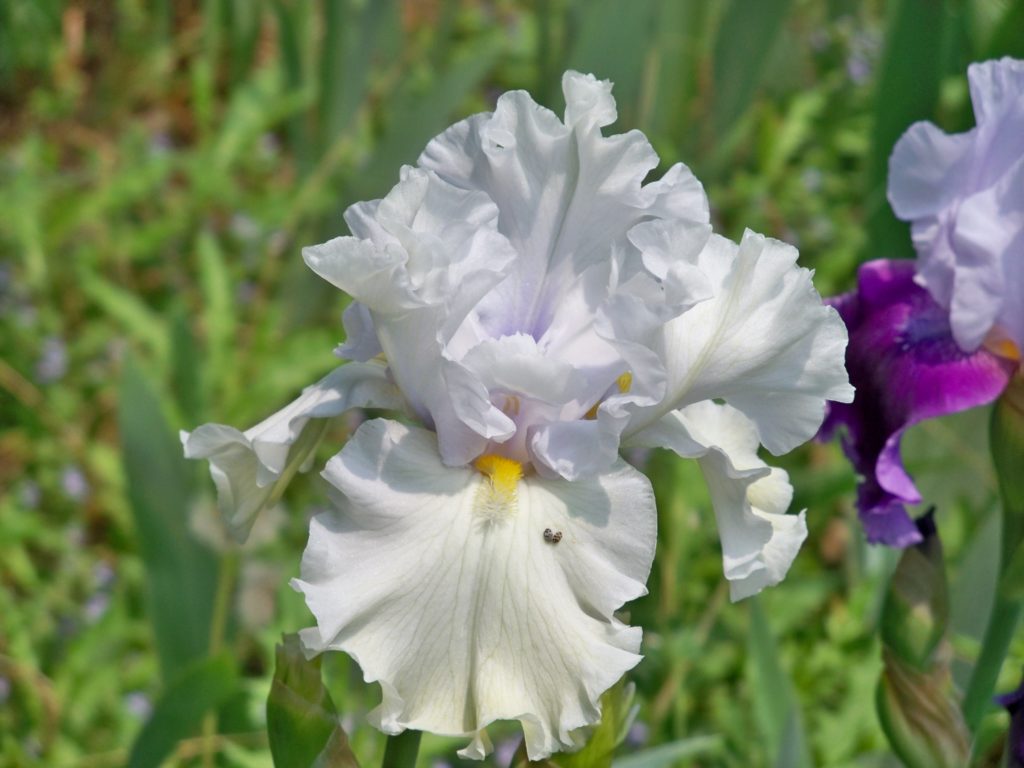
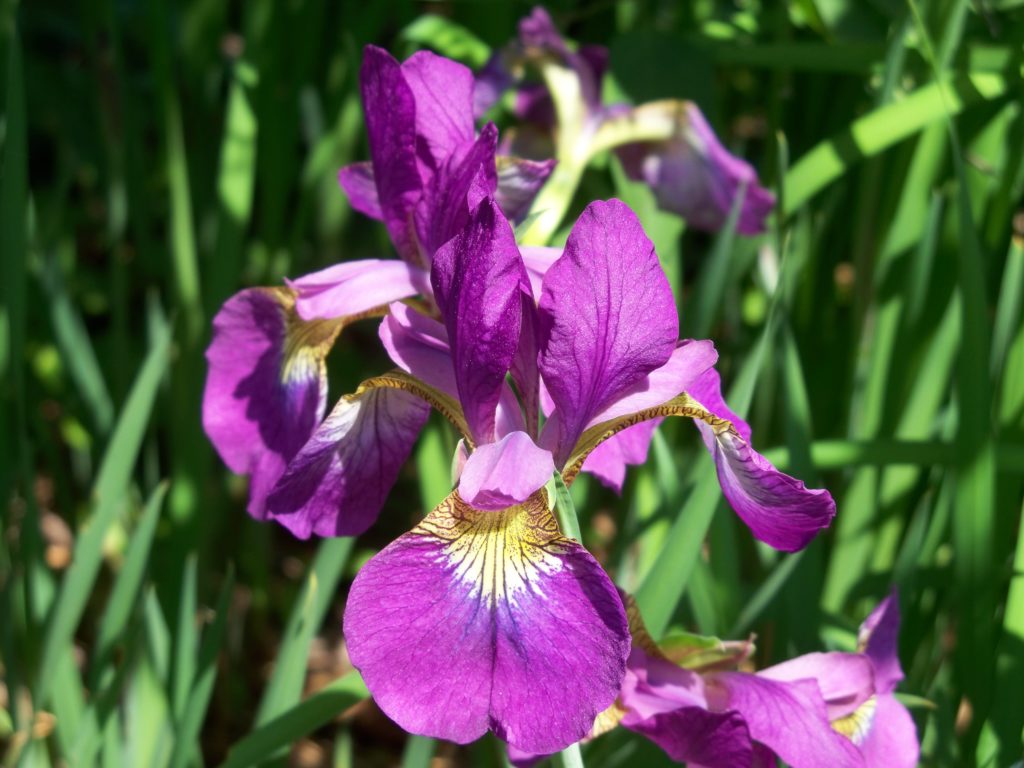
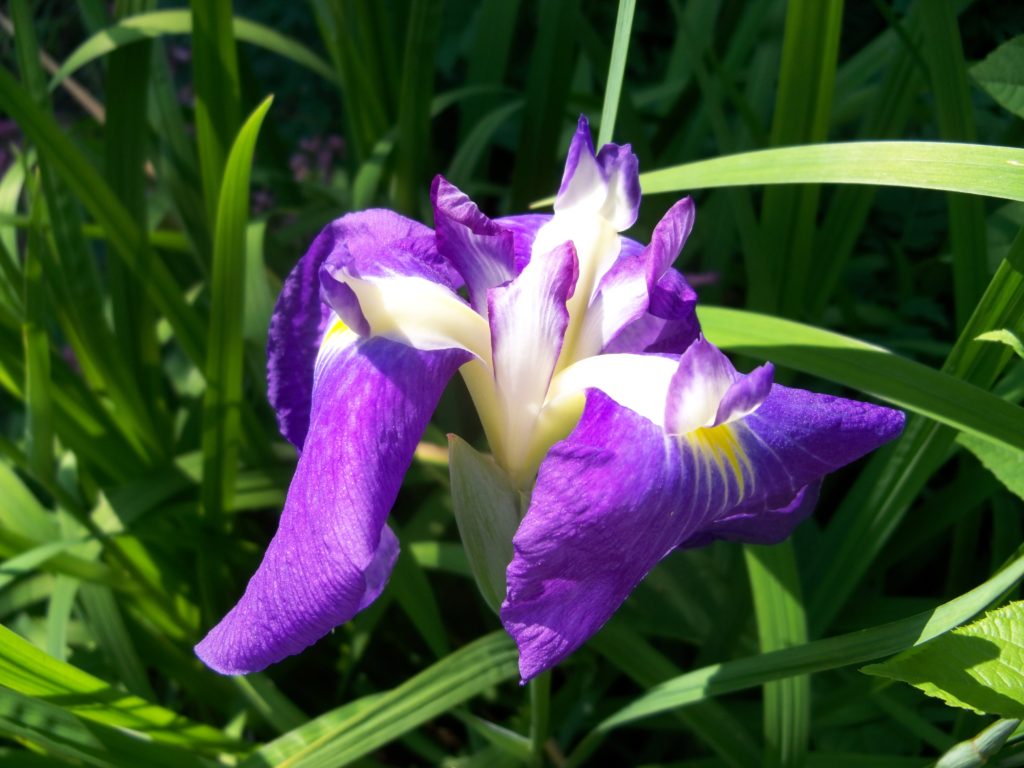
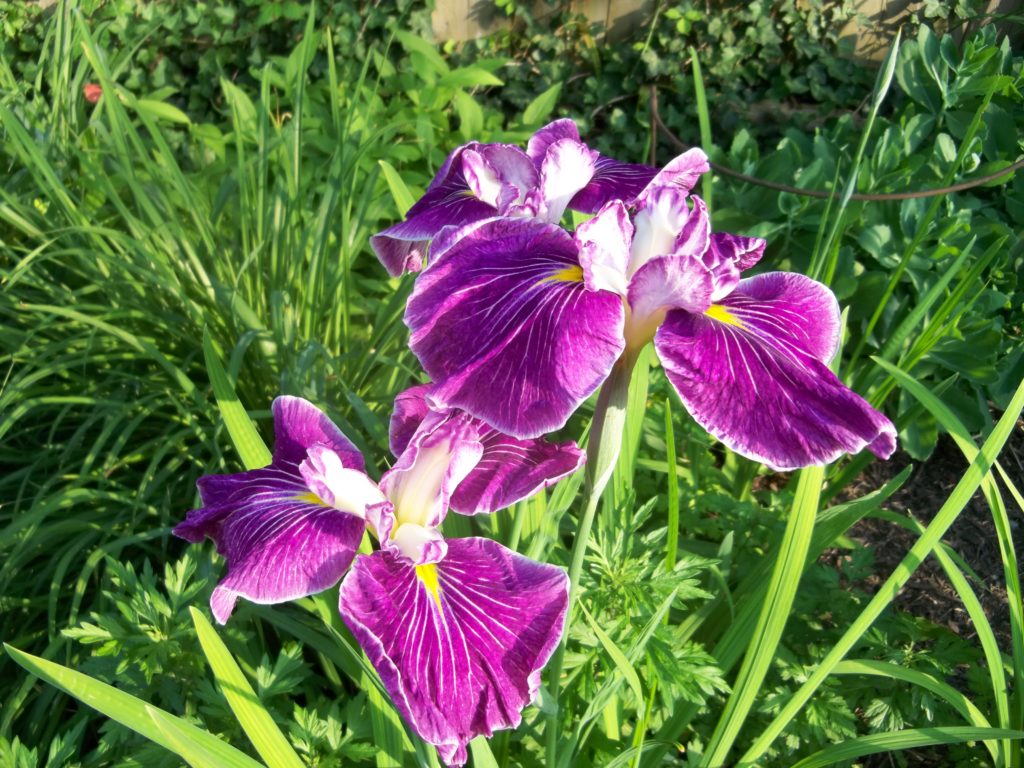
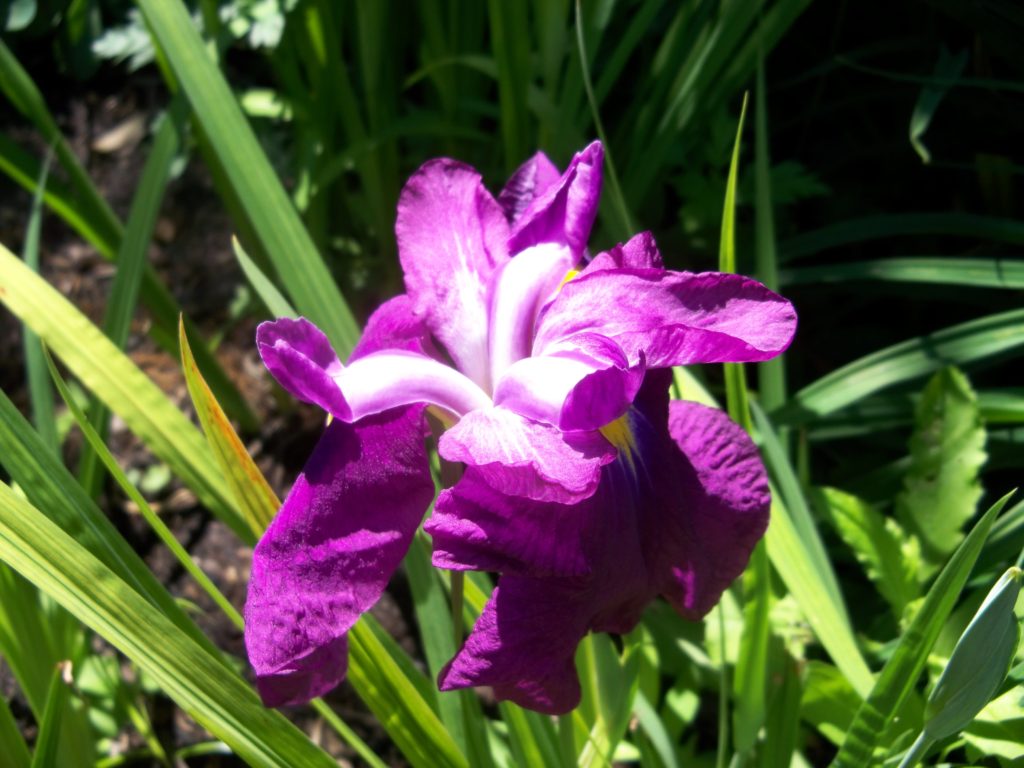
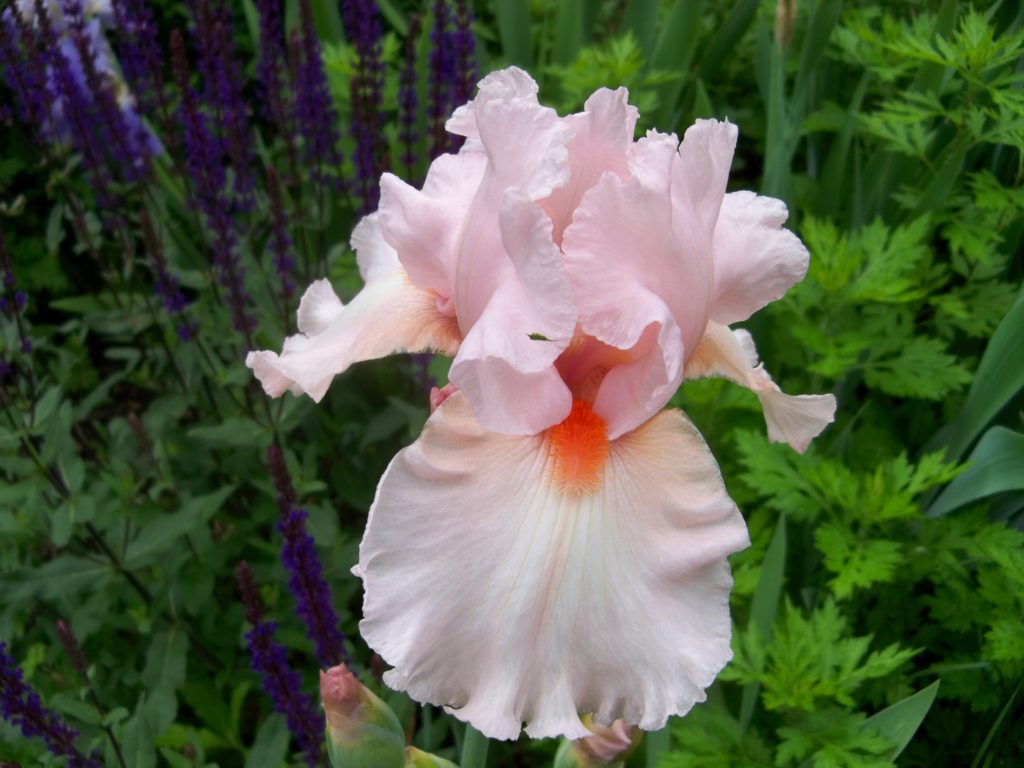
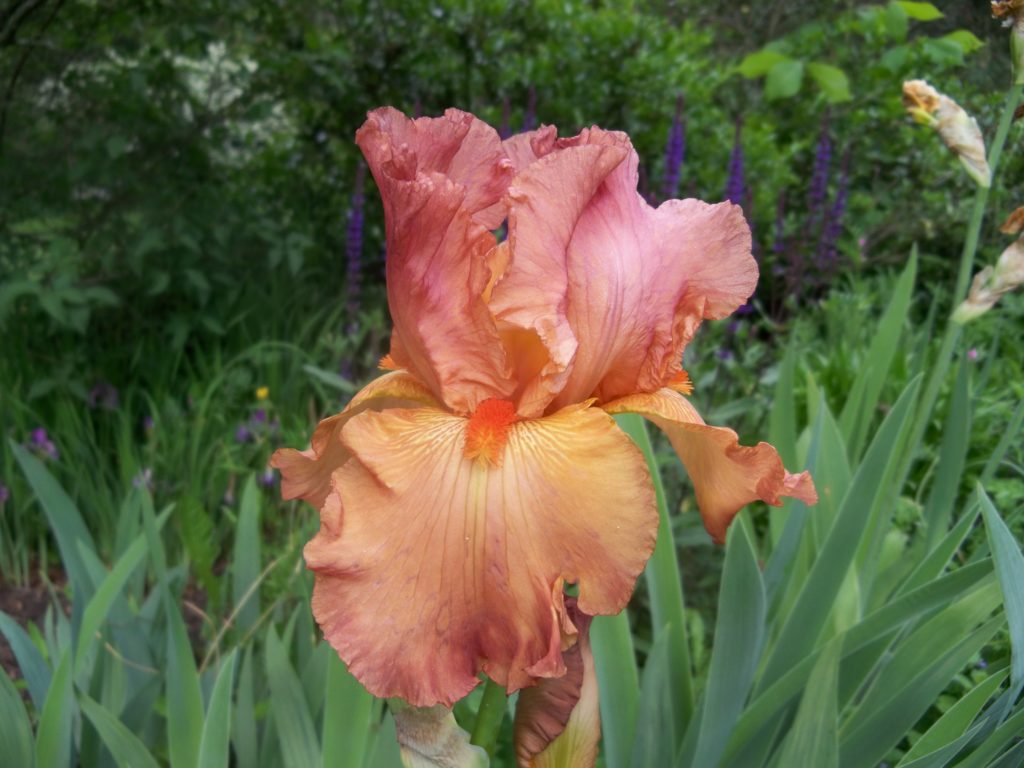
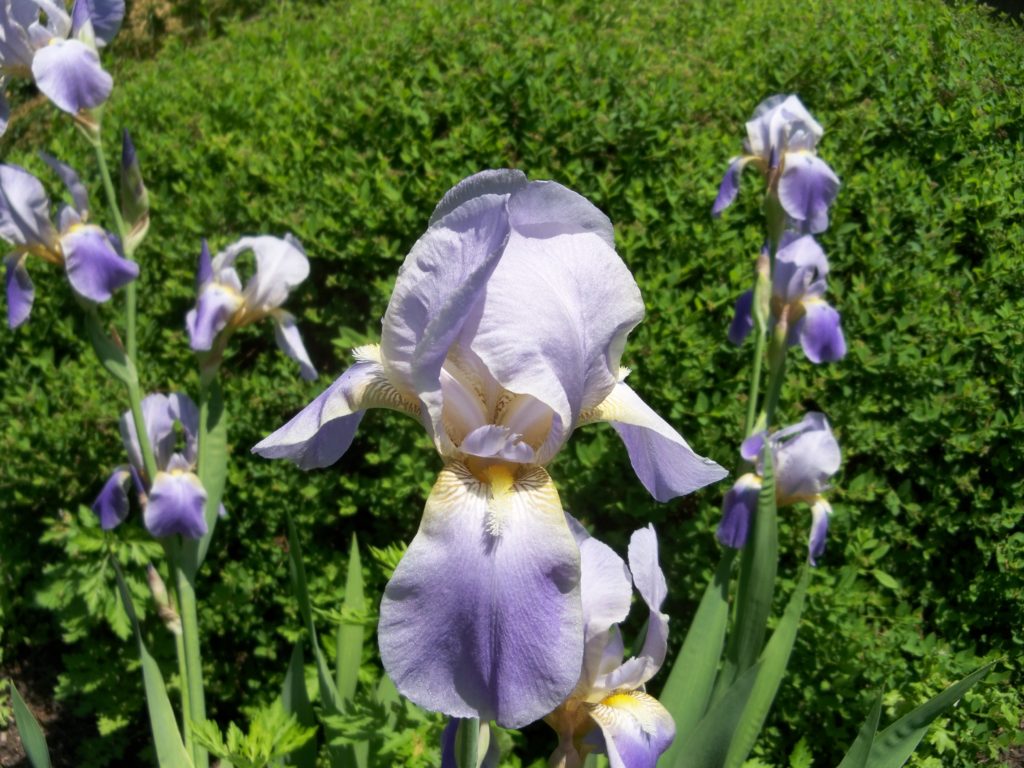
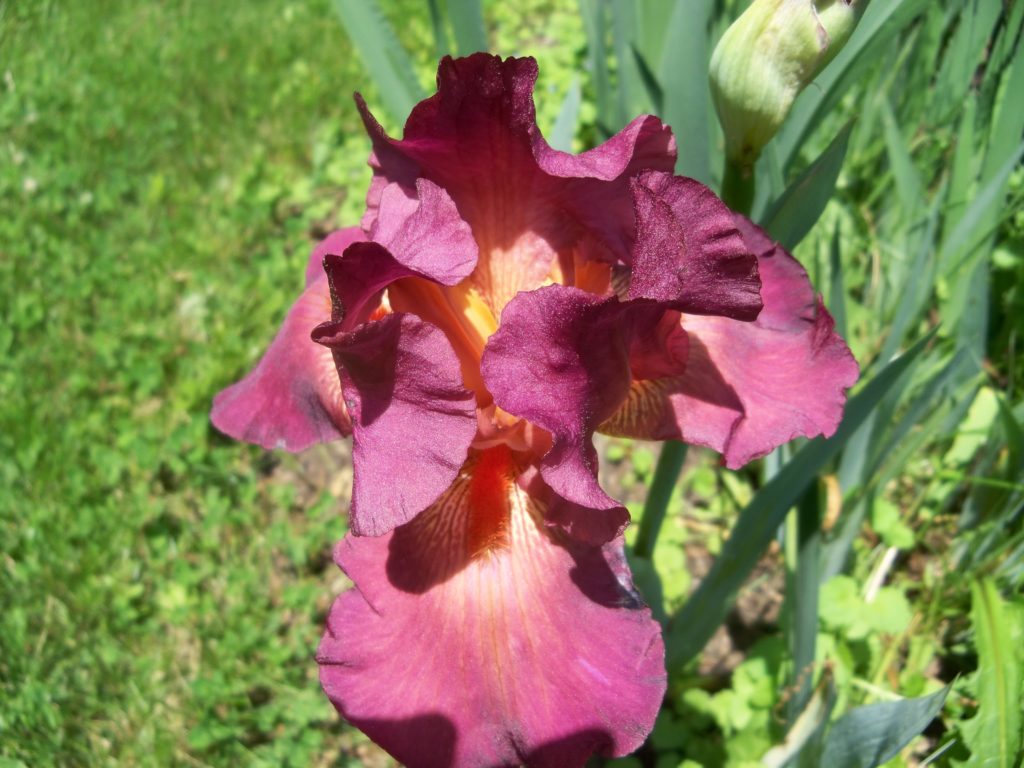
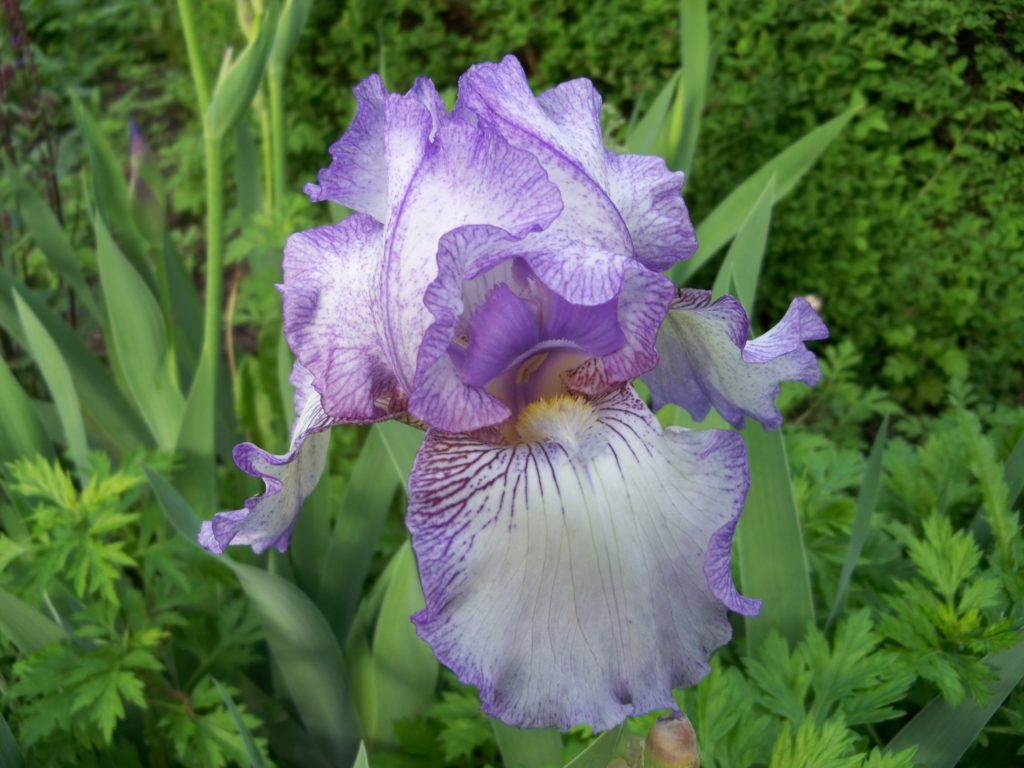
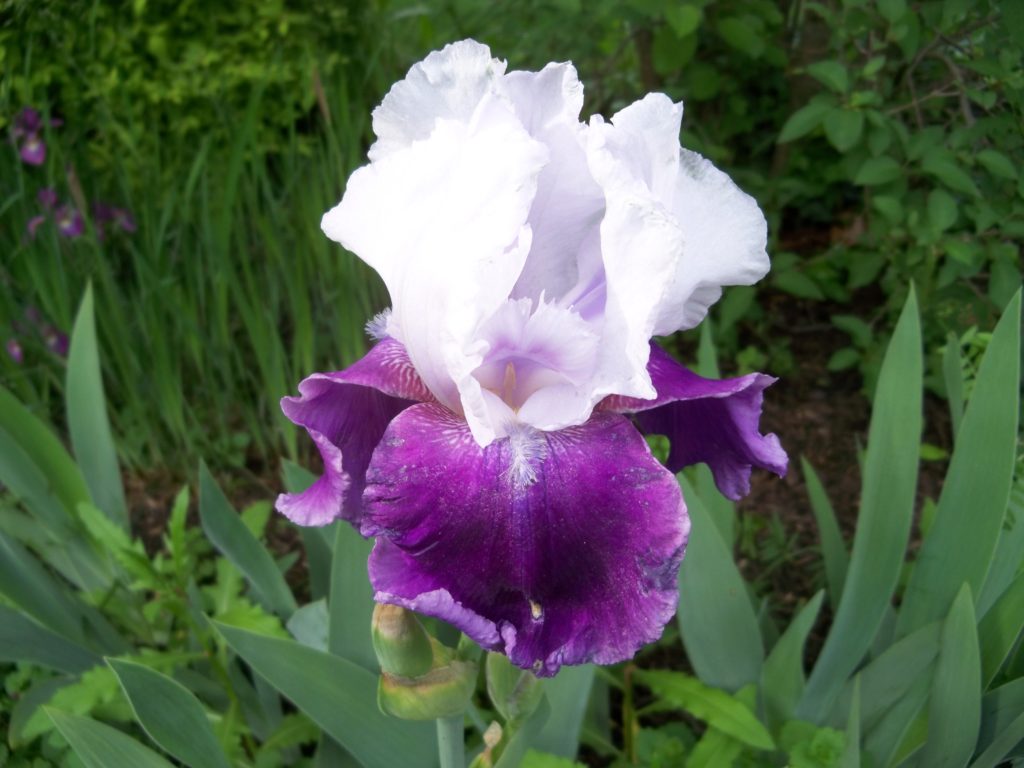
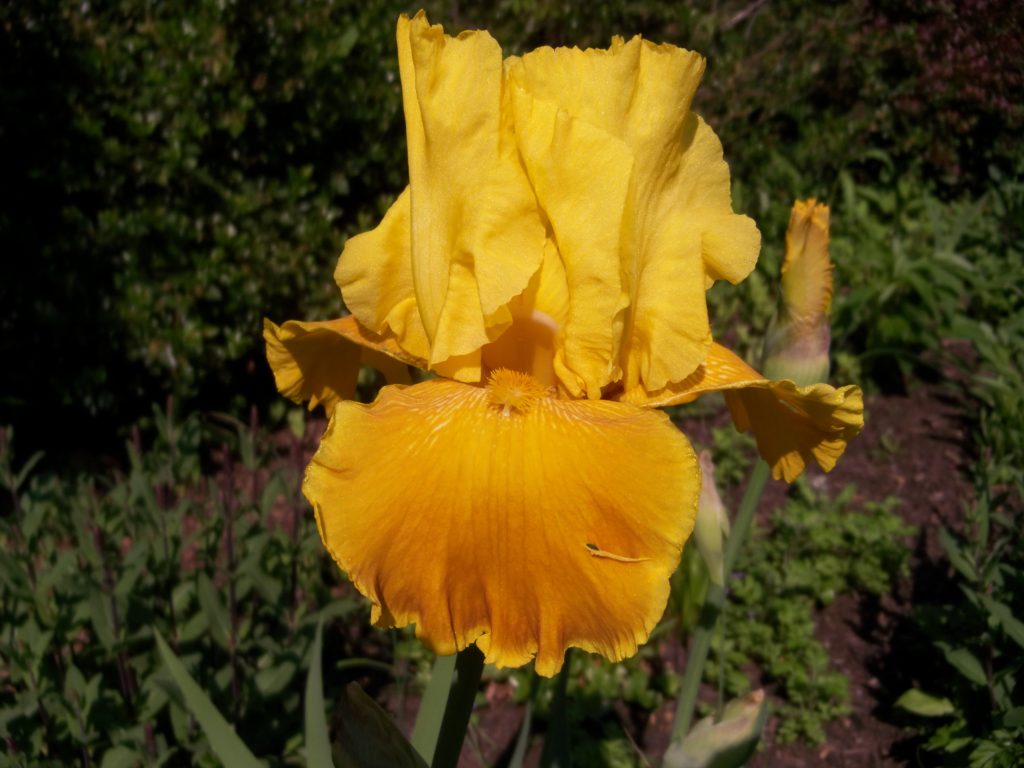
This post provides some tips for growing and caring for irises. Iris takes its name from the Greek word for a rainbow, probably because of a wide range of colors of flowers produced by it’s family members. The common irises suitable for Northeastern region are bearded iris, Siberian iris, and Japanese iris. All have hardiness to zone 3. They like full sun, however, Siberian and Japanese irises can stand part shade. All of them are deer resistant.
Growing irises
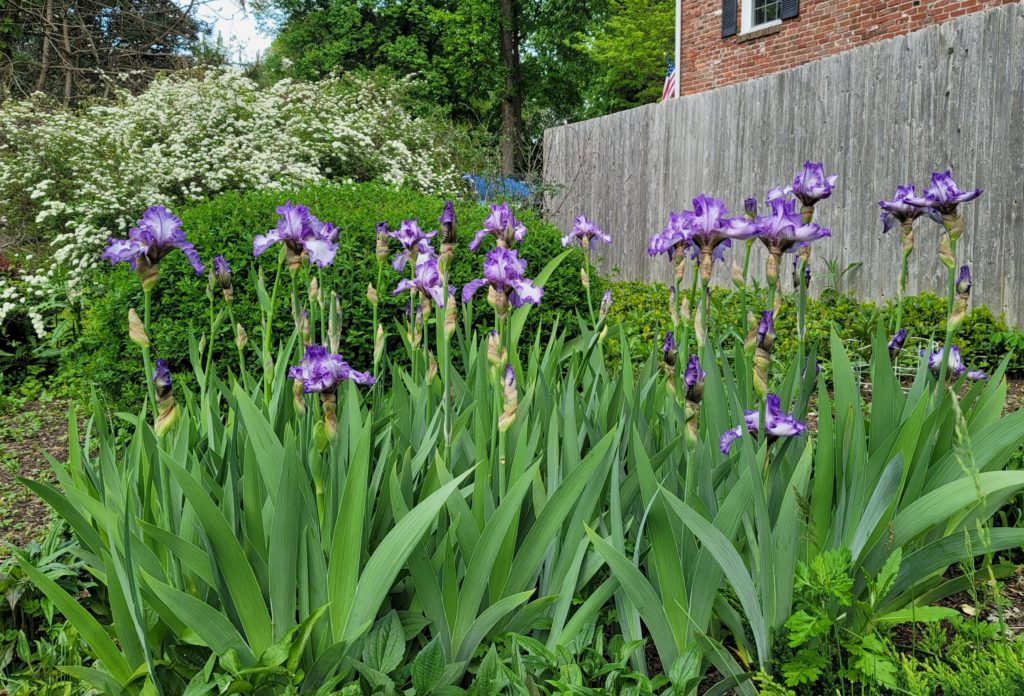
Bearded iris is so named because of groups of fuzzy hairs growing from the downward-facing petals. There are dwarf and tall cultivars. They have broad sword-like leaves. Their flowers are huge and in multiple colors. Bearded irises are drought tolerant. In fact, they do not like wet soil. Therefore, you should plant them in an area with good drainage. Their rhizomes look like ginger. The top of the rhizomes like to bathe in the sun. So you can plant them with the rhizome at the soil level. Bearded irises bloom in June, you should fertilize them in early spring.
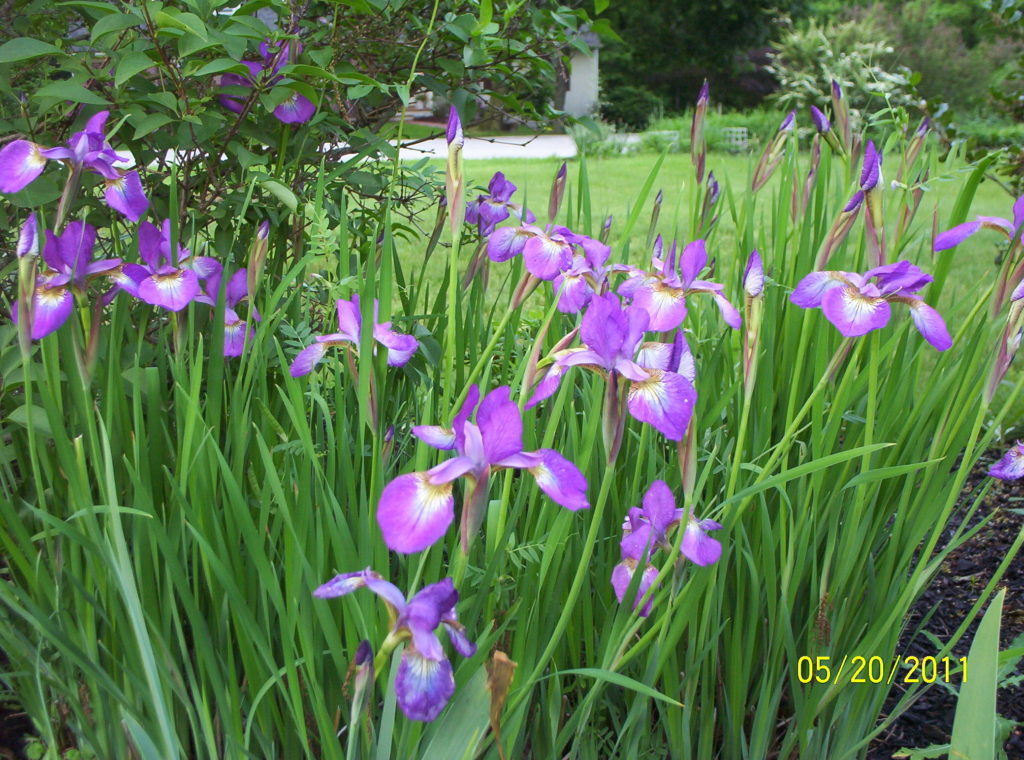
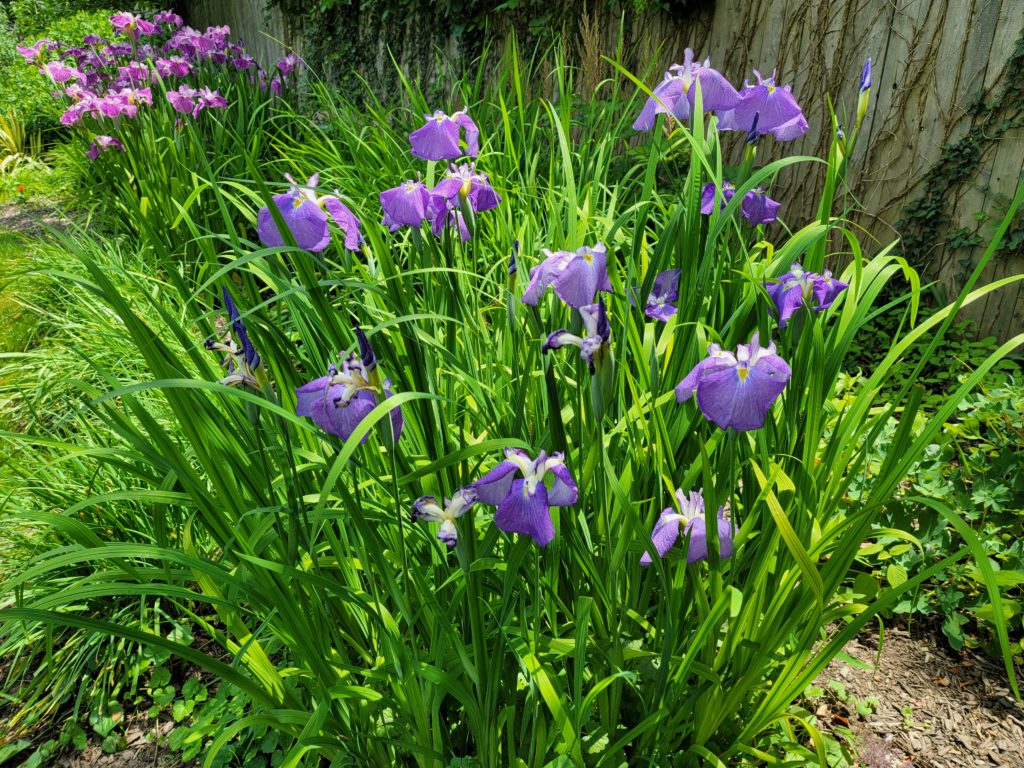
Siberian and Japanese irises are beardless. They have narrower leaves and form clumps, and bloom later than the bearded irises. Both irises produce flowers in multiple colors. The flowers of Japanese iris are huge, but those of Siberian iris are smaller. Siberian iris is not fussy on soil types. However, you should plant them in area with good drainage. They may rot in winter when the soil is too wet. On the other hand, Japanese iris prefers moist soil. Therefore, they need more frequent watering. Moreover, they will do better if they are in partly shady area, so that they will not be dried out too fast.
A huge selection of irises is available from many online stores, such as brecks.com.
Caring for Irises
Bearded iris
Because weeds can grow among bearded iris plants, there will be lot more work to do before and after blooming. The easiest way to remove weeds is pulling them out after rain. To facilitate weeding, make sure you can access the groups of irises from all directions. After blooming, you can cut the flower stalks at the base to prevent formation of seed pods.
Every 3-4 years, you can divide them by lifting them up with garden fork as soon as they finish blooming. Then cut off the old rhizomes with a sharp knife as shown in the pictures below, and re-plant the young ones (with their leaves cut down to about 3 inches to reduce loss of water) with spacing of 12 inches. Sprinkling the rhizomes with fungicide powder before planting may prevent rotting. In the fall, remove all dried leaves around the irises to prevent growth of molds and rotting of the rhizomes.
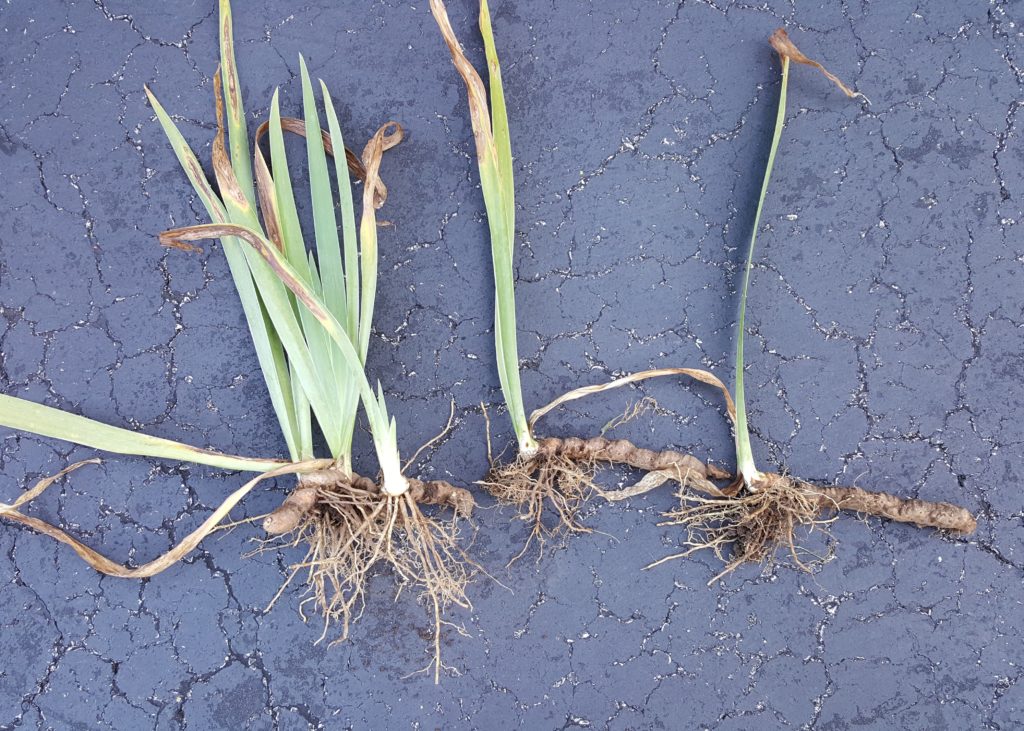
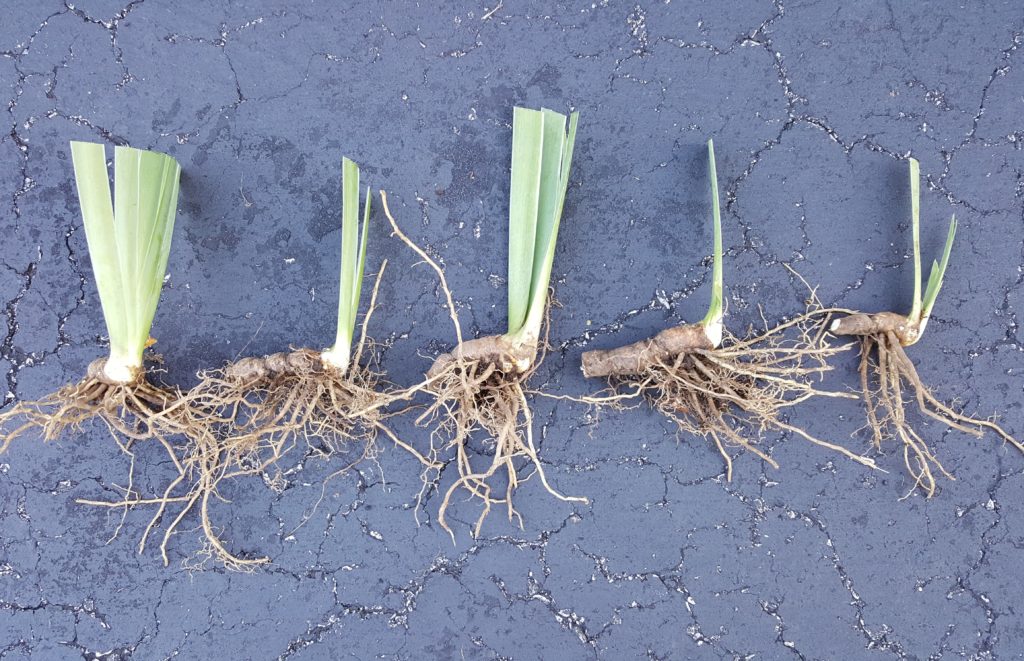
Siberian and Japanese irises
Maintenance for Siberian and Japanese irises is minimal. You just need to cut off the flower stalks down to the base after blooming. However, you may wait some time for Japanese iris, because new flower buds may appear after the other flowers are gone. In the fall, cut off the leaves of both irises down to 6 inches to prevent them from prostrating side way. Divide the crowded plants right after blooming or early spring in a way similar to that of daylilies, as their rhizomes are tiny.
